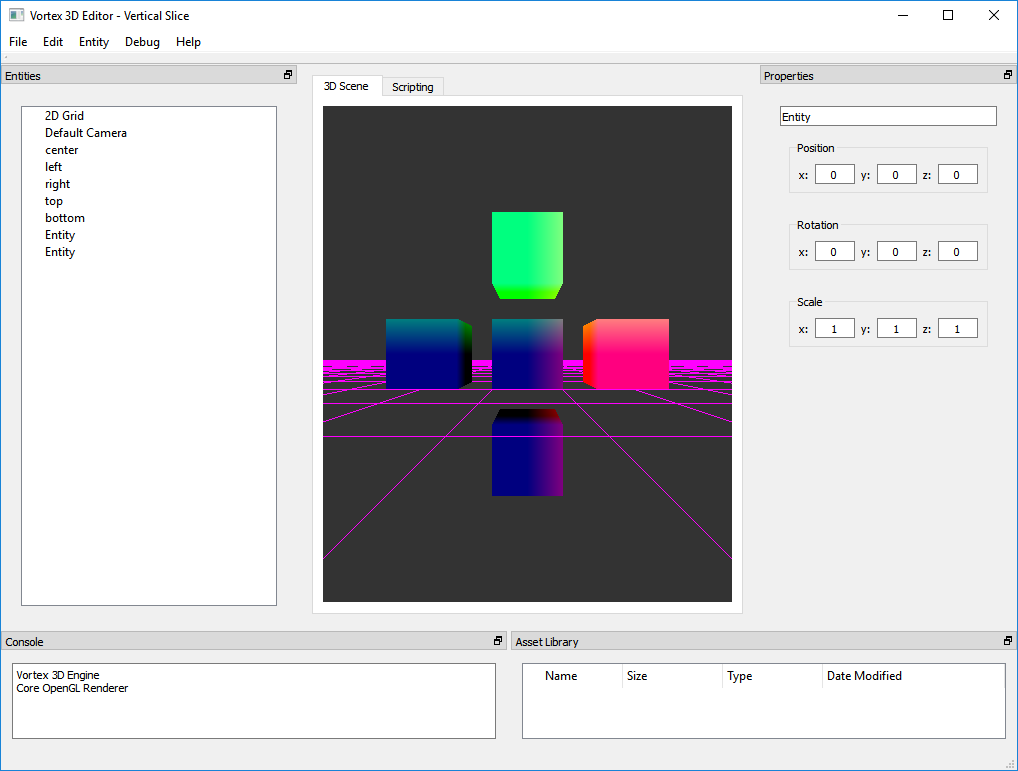G-Buffer
This week I started working on the G-Buffer implementation for the deferred renderer.

The G-Buffer pass consists in the first half of any deferred shading algorithm. The idea is that, instead of drawing shaded pixels directly on the screen, we will store geometric information for all our opaque objects in a “Geometry Buffer” (G-Buffer for short). This information will be used later in a lighting pass.
In sharp contrast to forward rendering, where the output of our rendering is the already-lit pixels, lighting calculations here are deferred to a later pass, hence the term deferred rendering.
The image above shows a simple test for the G-Buffer implementation in Vortex. In this test, we draw a number of boxes, with each vertex being colored according to their position in world space as read from the G-Buffer.
Notice how as vertices move left to right, we gain red (x translates to red). Similarly, as vertices move from bottom to top, we gain green (y translates to green). We cannot see it in this picture, but as vertices move from the back to the front, we also gain blue (z translates to blue).
Through this test we can also verify that moving the camera does not change the colors at all. This helps validate that our position data are indeed in world space.
This is going to be all for today. Next week, work will continue in the G-Buffer implementation. Stay tuned for more!